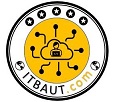Introduction
Welcome back, Geeks. In this article, we would try to cover ‘What is a fork in GitHub?’. In our previous article, we are now very familiar with various GitHub processes and terminologies. Hence, we would like to take you even more deeper and understand what exactly fork is in GitHub. We believe this article would clear all your doubts and help you to understand Fork.
What is a Fork in GitHub?
In GitHub, a “fork” is a copy of a repository that is created under your own GitHub account. Forking a repository allows you to freely experiment with changes without affecting the original repository. It’s a core feature of GitHub that enables collaboration, contribution, and open-source development.
How does a Fork work?
Now, let’s deep dive and proceed step-by-step to understand the Fork concept –
Creating a Fork
When you find a repository on GitHub that you want to contribute to or use for your own purposes, you can “fork” it. This creates a new copy of the repository under your GitHub account.
Your Own Copy
The forked repository is entirely separate from the original repository. You have full control over your forked copy and can modify it as you wish without affecting the original repository.
Making Changes
Once you have a fork of a repository, you can clone it to your local machine, make changes (e.g., code modifications, bug fixes, adding features), and commit those changes to your fork.
Pushing Changes
After making changes locally, you can push the changes back to your forked repository on GitHub. This will update the code in your fork.
Creating Pull Requests (Optional)
If you want to contribute your changes to the original repository, you can create a “pull request” (PR). A pull request is a way to propose your changes to the repository’s maintainers for review and potential integration.
Collaboration and Contribution
Forking is particularly useful in open-source projects. It allows contributors to work on their changes independently and then submit those changes as pull requests to the original repository. This enables collaborative development among multiple contributors.
Benefits of Fork
Contributing to Open Source: Forking enables you to contribute to open-source projects by making changes and submitting pull requests to the original repository.
Experimentation: You can use forks to experiment with changes or new features without affecting the main project until you’re ready to propose those changes.
Personal Use: Forking lets you create a copy of a repository for your own personal use, such as studying the code, adapting it for your needs, or building upon it.
Collaborative Work: If you’re working on a collaborative project, each team member can fork the repository to work on specific features or bug fixes independently.
Version Control: Forking helps maintain version control, as you can track and manage changes separately from the original repository.
Avoiding Interference: Forking ensures that your changes won’t disrupt the original repository or the work of other contributors.
Fork your all good memories, so that you could enjoy them in your tough time. 🤞
Gaurank
Conclusion
In conclusion, when you fork a repository, you gain autonomy over your own copy while maintaining a connection to the original project. This flexibility and separation make forking a powerful feature in GitHub that supports both individual experimentation and collaborative development.
Still, if you have any questions & queries, 🤔 please comment them below and we would try our best to answer them at the earliest.
HAPPY LEARNING!! 😊

This Post Has One Comment
I’m a regular blogger, and I must say, I adore reading your posts. My interest has been piqued by the article. I’m going to save your blog to my bookmarks and check again for fresh content.